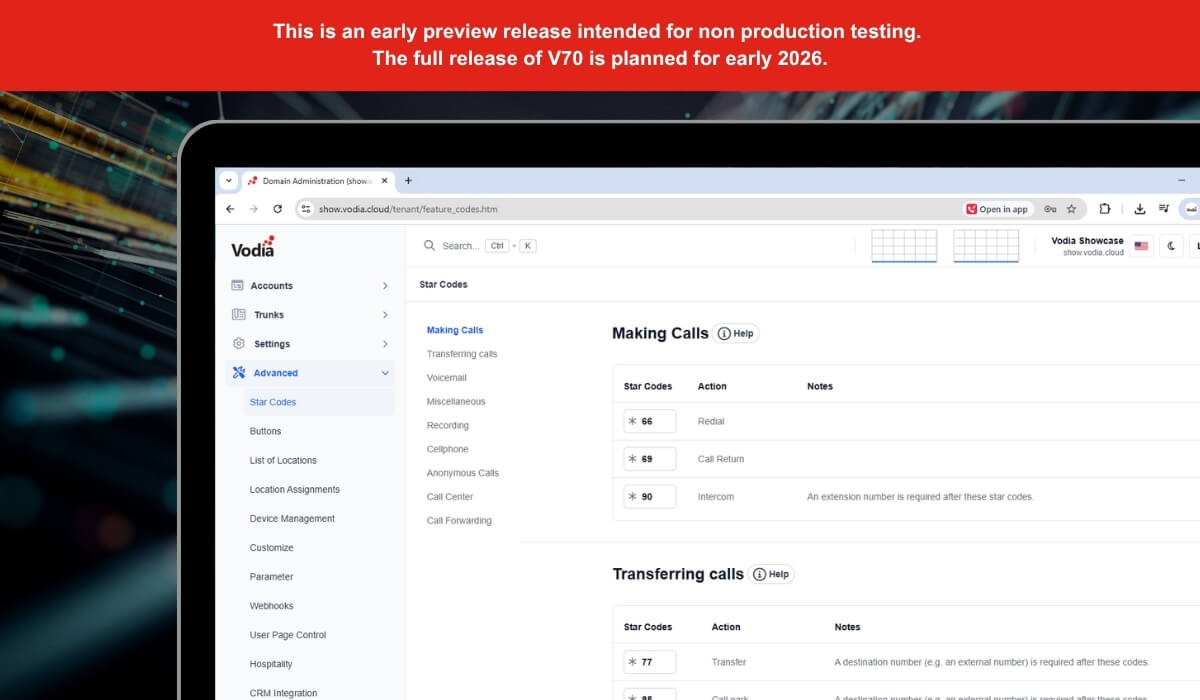In the latest version we have added a warning sign on the general settings page for the domain. This is for a reason. Telling the PBX how to interpret numbers makes it a lot easier to deal with the various ways to represent numbers in different parts of the world.
Essentially there are two areas. The so-called NANPA region is essentially USA and Canada - NANPA stands for North American Number Plan Association. The organization deals with the distribution of the 10-digit number block allocated for the area, which has the international dial code “1”. Usually numbers have exactly 10 digits, and they are commonly written in xxx-xxx-xxxx or (xxx) xxx-xxxx notation. In the old days, when most calls were local, people could call just the 7 last digits and leave out the area code (this is why the area code was written in brackets). Today, however, practically all calls include the area code. There are some numbers, like 911, 411 or 555-xxxx, which are an exception to the 10-digit rule. Because the number length in the NANPA region is predictable, it's possible to provision phones with a phone dial plan that automatically starts dialing when the number is complete. In this case users have to start dialing with a “1” when they want to call a 10-digit number.
The rest of the world is using numbers where the PBX isn't able to predict the length of the numbers are. In these areas, the challenge is to guess how the number begins - depending on the context, numbers may start with the country code, with the area code or just the local number. If the PBX has the country code and the area code, it can automatically convert numbers into the globally routable number. For example, if the call comes in on trunk A through a local PSTN gateway, it will be able to call that number back through another trunk B.
To discern if a number is in a global format, the number must start with a plus sign. Users may even enter numbers starting with a plus sign to tell the PBX where to send the call, no matter what the country code is. This has also become a common feature of many cell phones, especially in countries where a lot of international calls are made. If users are entering numbers in the PBX that start with a plus sign, the PBX will happily accept it. Otherwise, it's important the PBX knows which country the number is in. That’s why we encourage everybody to check what country code has been set on the domain.
In the light of this discussion it becomes clear why putting a “9” in front of every number is a bad idea. In the old days, when PBX were connected through analog lines (one cable for every possible phone call), this number was used to grab one of those lines and get the dial tone. In today’s digital world, however, and with modern requirements, such seizing of lines isn't necessary and, looking at multiple trunks in a domain, even impossible. For example, when users dial 911 to call emergency services, it seems ridiculous that they have to dial 9, wait for a dial tone, and then dial 911. Most users have cell phones today, so they can first enter and edit the number and then press the send button to start the call. There is no reason why they shouldn't do the same thing on a VoIP phone.
.svg)





